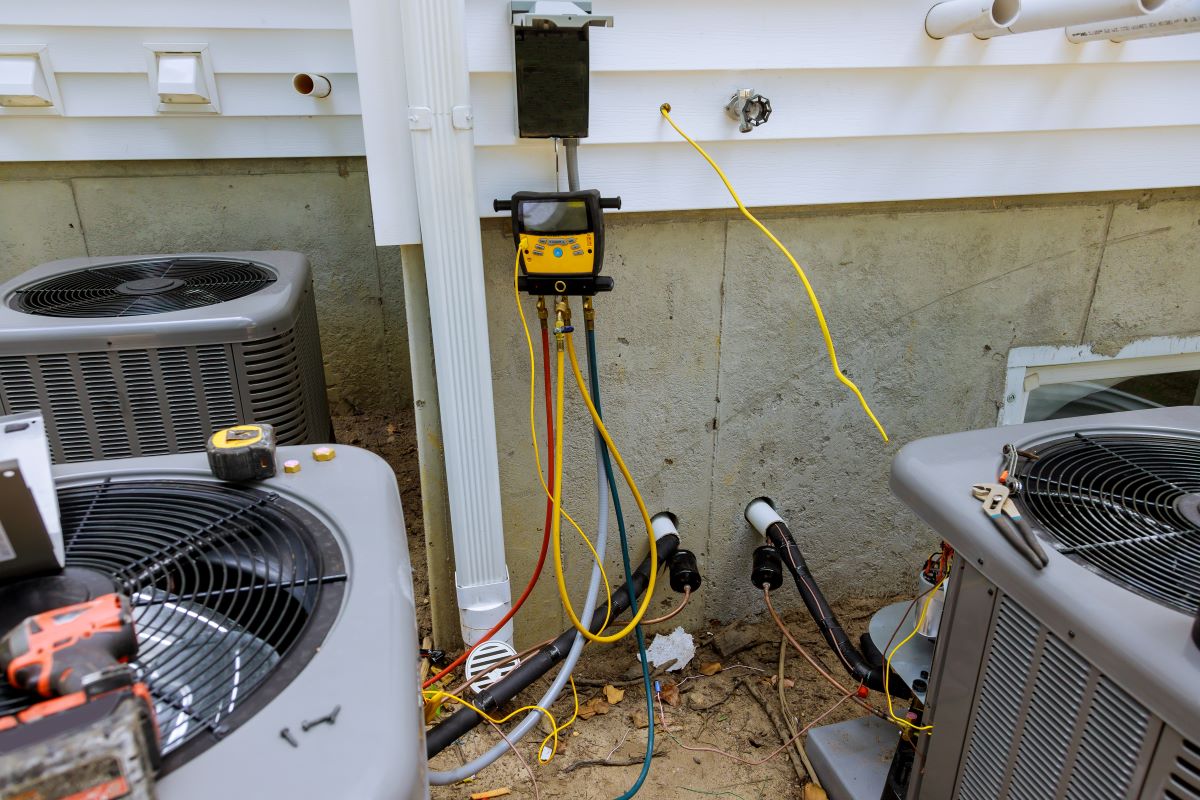Replacing your air conditioning system is a big decision—one that affects your comfort, energy bills, and even your home’s resale value. But with so many different units, efficiency ratings, and installation requirements, figuring out what a replacement should cost can be overwhelming.
If you’re wondering how much should a replacement AC unit cost?, you’re not alone. Homeowners across California often ask this question when their existing system starts to fail or becomes too expensive to operate. In this blog, we’ll explore the cost range, what factors influence pricing, and what to expect when replacing a home AC unit.
Average Cost of Replacing an AC Unit
For a typical single-family home, replacing an AC unit can cost anywhere between $4,500 and $9,000, including equipment and labor. This range depends on several factors, including the size of the air conditioning unit, system efficiency, and the complexity of the installation.
If your home is larger or has unique cooling needs, your total could be higher. Conversely, smaller homes or straightforward replacements may come in on the lower end of the range.
What’s Included in the Cost?
When budgeting for air conditioning unit replacement, it’s helpful to understand what’s typically included in the overall price:
- New air conditioning unit with a compatible capacity for your home
- Labor and installation by a licensed HVAC installer
- Removal and disposal of the old system
- Refrigerant line adjustments or replacements
- New thermostat (if required)
- Electrical upgrades or ductwork modifications, if needed
- Warranty and inspection
Some situations may require ductwork changes or new electrical panels, which can increase the total cost.
Factors That Affect the Price
Here are the key elements that influence how much you’ll pay when replacing your air conditioner:
System Size and Capacity
Your system must be sized correctly based on your home’s square footage, insulation, and layout. An undersized unit won’t cool efficiently, while an oversized unit can lead to higher energy use and premature wear.
Energy Efficiency
More efficient units—those with higher SEER (Seasonal Energy Efficiency Ratio) ratings—cost more upfront but save money over time through reduced energy bills. Many homeowners find this trade-off worthwhile in the long run.
Type of System
Are you installing central air, a ductless mini-split, or a heat pump? Each type has different price points, pros, and installation needs. Discuss options with a local HVAC installer to determine what’s best for your home.
Labor and Installation
Labor costs can vary based on location and job complexity. Hiring trusted HVAC contractors near you ensures the job is done right and up to code, especially when refrigerants or electrical systems are involved.
Additional Work
Extra services such as duct repairs, permit fees, and upgraded thermostats can add to the total cost. It’s important to get a detailed quote before starting the project.
 Replacing vs. Repairing
Replacing vs. Repairing
Sometimes homeowners wonder if it’s worth fixing their current system instead of replacing it. If your unit is more than 10–15 years old, needs frequent repairs, or is inefficient, replacement is often the smarter choice.
Replacing an AC unit may seem like a bigger investment upfront, but it can lower utility bills, reduce repair costs, and improve indoor comfort. It also gives you peace of mind with a new warranty and modern components.
How to Choose the Right HVAC Installer
The success of your air conditioner installation depends largely on the contractor you hire. A qualified HVAC installer will:
- Help you select the right system size and type
- Ensure energy efficiency compliance
- Handle proper AC installation to local codes
- Offer warranties and post-installation support
- Manage permits and inspections as needed
Make sure to read reviews and choose experienced HVAC contractors near you who are licensed, insured, and familiar with California building standards.
Planning for Installation
Timing and preparation are essential to a smooth replacement. Summer is the busiest season for HVAC work, so it’s best to plan your project during spring or fall when demand is lower. This can also help you secure better pricing and scheduling flexibility.
For those living in or near San Ramon, understanding the full process is especially important due to local regulations and permit requirements. We recommend reading the Guide to AC Installation & Replacement in San Ramon, CA, which offers insights into system options, pricing, energy codes, and what to expect before, during, and after the project.
Tips to Get the Best Value
If you’re preparing for air conditioning unit replacement, here are a few tips to help you maximize your investment:
- Get multiple estimates to understand market pricing
- Ask about rebates or incentives—California often offers energy efficiency programs
- Don’t overlook warranties—a strong warranty protects your investment
- Focus on total value, not just the lowest price—consider service quality, experience, and support
So, how much should a replacement AC unit cost? While the exact number depends on many factors, most homeowners can expect to spend between $4,500 and $9,000 for a professional air conditioner installation. Investing in a new system improves comfort, lowers energy use, and adds value to your home.
If you’re considering replacing your home AC unit, now is a great time to consult with a trusted team that understands your local needs.
Call 925-755-4440 or send us a message through our website to schedule a consultation. We’re here to help you choose the right system, handle the installation with care, and ensure you stay cool for years to come.


